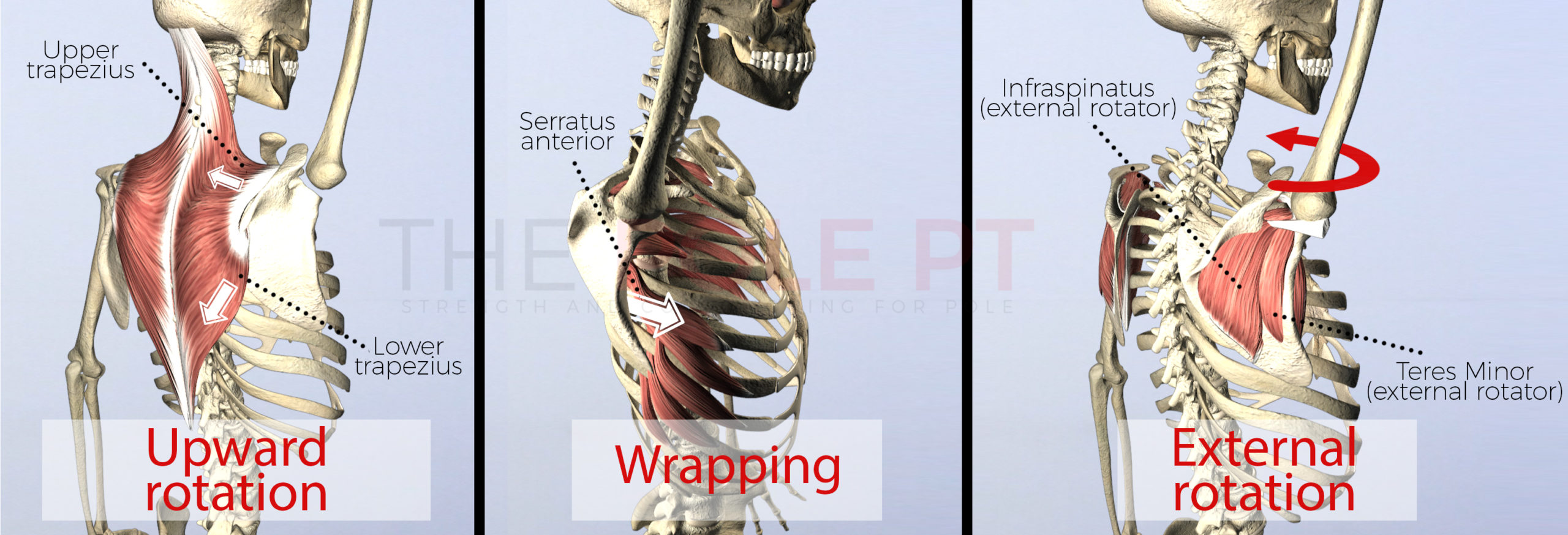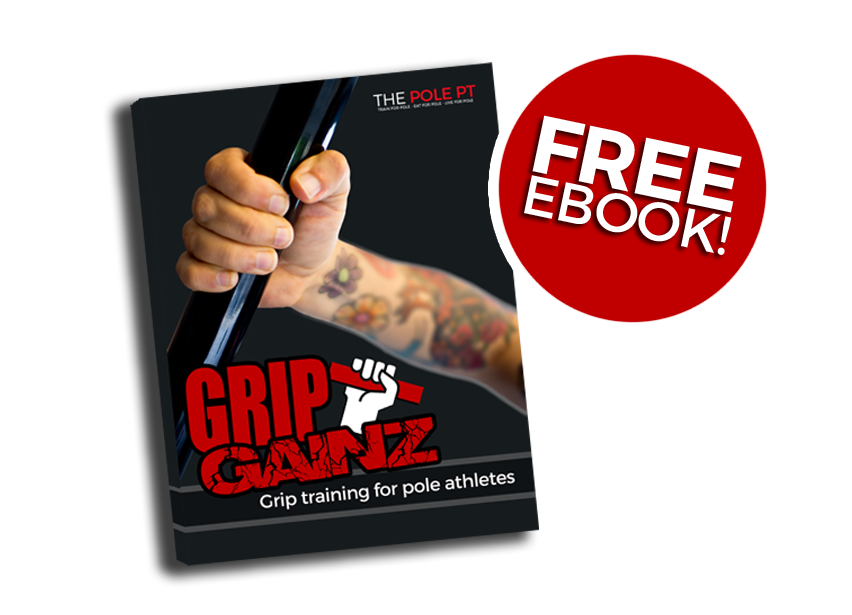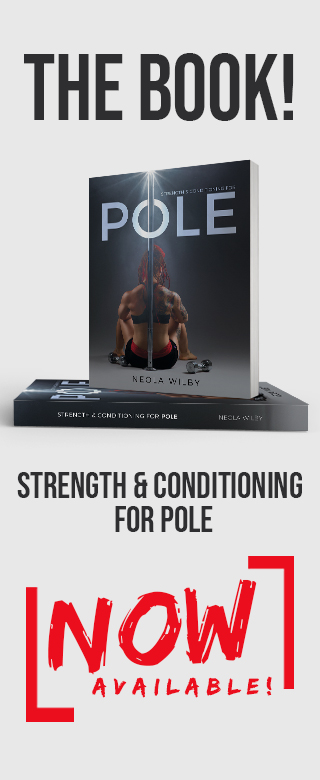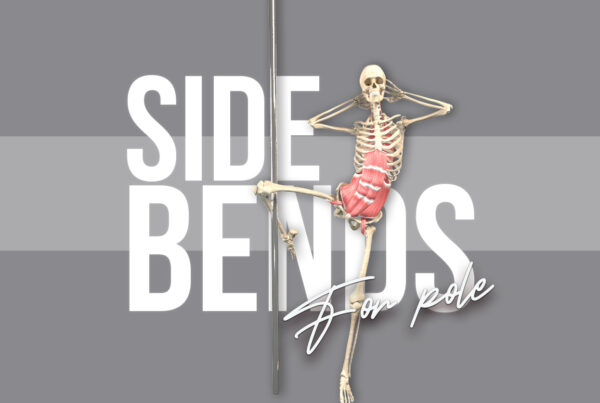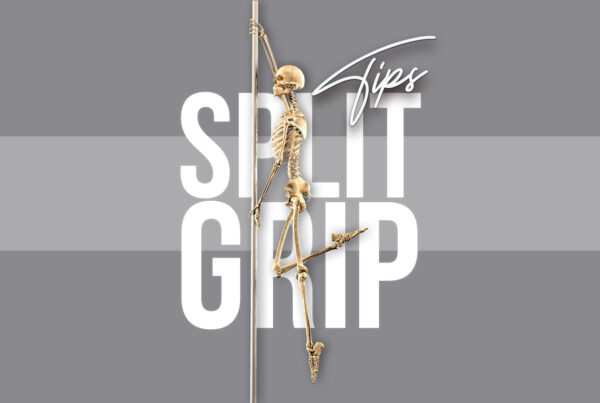When we pole dance, we put a HUGE demand on our shoulders. Not only do we need ninja-level shoulder mobility that allows us to make the most mind-blowing shapes with our bodies, but we also need our shoulders to be hella strong in those end range positions.
In this 3-part blog/video series, we’re looking at one particular aspect of shoulder movement that is especially important for pole dancers: shoulder flexion – and, more specifically, overhead pushing and pulling.
In Part 1, we looked at ‘good’ shoulder mechanics in an overhead position and how this looks and feels when we’re upside down and PUSHING with that overhead arm (like in an Ayesha).
Today, I wanna flip this and focus on how this shoulder mechanics looks and feels when we’re PULLING with our arm overhead (like in a pole spin) and what we’re actually asking our bodies to do with that ‘shoulders down and back’ cue.
If you’d rather watch than read, you can watch the video of this entire blog post below, complete with animated 3d pole anatomy awesomeness...
Quick recap: what does ‘good’ shoulder mechanics look like in pole?
Here’s a quick recap of what we discussed in Part 1…
When we raise our arm overhead, we want our shoulder blade to upwardly rotate about 60 degrees, to tilt posteriorly – and to stay hugged to our ribcage and wrap around our body. We also want to create external rotation of the arm.
These 4 things, combined together, help to create optimal space within the shoulder joint and support the joint with our arm fully overhead.

Here are the main muscles involved: the trapezius (particularly the lower trapezius) which creates that upward rotation, along with the serratus anterior which assists with that rotation as well as keeping the shoulder blade close to our rib cage and wrapping around the body. The humeral external rotation is stabilised by our rotator cuff.
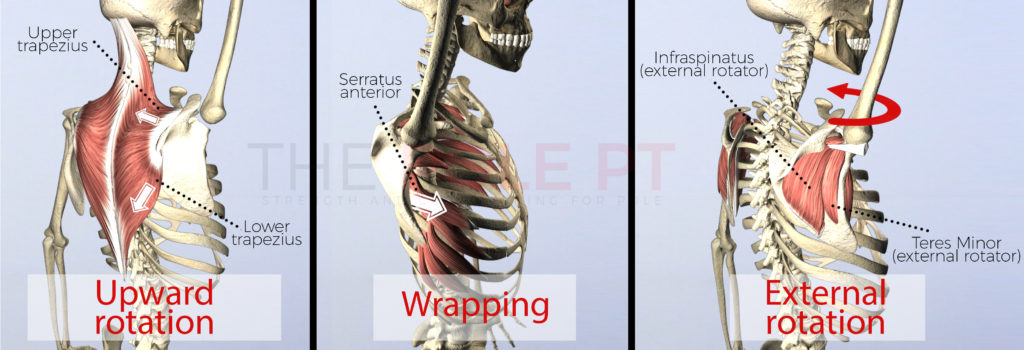
We know that in a handstand or Ayesha position, with gravity pushing our body DOWN, we need to actively PUSH to help facilitate that upward rotation, but what if we flip this around?
What if our arm is overhead, but we’re not pushing, we’re pulling – like in a pole spin?
Remember that the principles of good shoulder mechanics haven’t changed. We still want those 4 elements: the scapula upward rotation, the posterior tilt, the wrapping and the external rotation of the arm.
BUT because gravity is now pulling our body DOWN, we need to lift our body UP to counteract this. This is why when we’re cueing shoulder engagement in pole, we often use cues like ‘squeeze the shoulder blade down and back’.
This ‘down and back’ cue is to prevent us from hanging off the shoulder joint and to help us keep the shoulder blade anchored on our body. Good, good. ✔
BUT! How we achieve this ‘down and back’ shoulder engagement is important!
Our initial instinct when we try to create this ‘down and back’ engagement is usually to pull down using the large and powerful Latisimus Dorsi muscle.
The problem with using our lats for this ‘down and back’ action is that our lats actually pull our shoulder blade into depression and create DOWNWARD rotation = the opposite of that upward rotation that we want!
Our lats also internally rotate the arm = the opposite of that external rotation of the arm that we are trying to achieve!
For this reason, we ideally want to avoid driving that ‘down and back’ action with our lats and instead recruit our mid and lower traps to keep our shoulder blade anchored to our trunk while also maintaining that upward rotation of the scapula and external rotation of the arm.

How can we teach our bodies what this shoulder engagement feels like? And how can we cue this when we’re on the pole?
Click here to continue reading to the final part of this shoulder engagement series where I share some of my favourite shoulder engagement exercises for pole dancers!
Shout out! To The Circus Doc – Dr Emily Scherb! Emily’s courses on hanging in aerial arts have really helped to solidify my own understanding of how this all works. If you’re a body nerd like me, you’ll love The Circus Doc anatomy education courses, too! I can’t recommend them enough – go check ‘em out here! Go! Go! There’s much nerding to be done!*
*Just so you know, I earn a commission if you use this link, but I’d never recommend products to you that I don’t use and love myself!
+ If you wanna geek out more with me about all things pole strength and anatomy, check out my books – Strength and Conditioning for Pole – and Pole Anatomy – both available now in paper copy or immediate electronic download!


